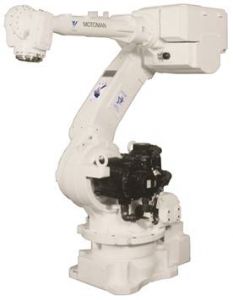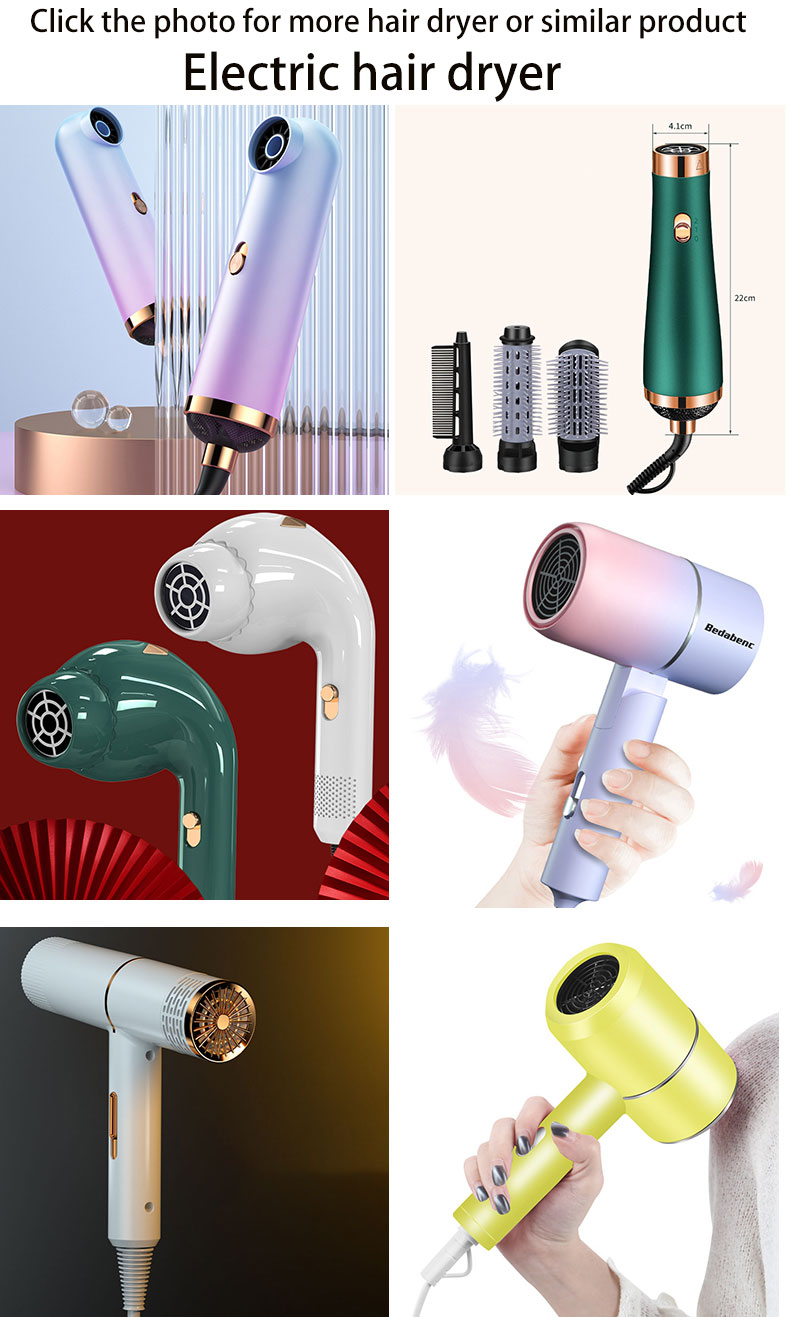What function are we using the hair dryer?
If high wind speed cannot be achieved, the traditional hair dryer can only increase heat, but high heat is easy to damage hair, so it can alleviate the damage of high temperature to hair through water ion, anion and other generators that "moisturize" hair. The hair effect blown out is even more supple than that of a high-speed hair dryer
Hair Dryer,Diffuser Machine,Aroma Diffusers Shenzhen Ewong Technology CO.LTD , https://www.dgewongtech.com Industrial robots are an important result of modern industrial manufacturing. The development of automated production lines is inseparable from industrial robots. As one of the relatively backward industrial manufacturing technologies, the equipment market for robotic automation production lines in China has just started. The domestic industrial robot market is largely occupied by imports, and the domestic market share is small.
Industrial robots are an important result of modern industrial manufacturing. The development of automated production lines is inseparable from industrial robots. As one of the relatively backward industrial manufacturing technologies, the equipment market for robotic automation production lines in China has just started. The domestic industrial robot market is largely occupied by imports, and the domestic market share is small.
According to predictions, currently China's auto industry, electronics and home appliances industry, tobacco industry, new energy battery industry, and so on, the annual demand for such automation lines reached more than 300, with an annual output value of about 60 billion yuan.
During the "12th Five-Year Plan" period, with the rapid development of the robot industry in the country and the drive of the downstream industry, the demand for industrial robots will show a strong trend in the future. Faced with huge market and huge development opportunities, domestic industrial robot manufacturers urgently need to defend their rights and interests in competition with international giants.
Imported robot occupy eighty percent of the domestic market <br> <br> It is reported that the world's industrial robot industry, the four giant Swiss ABB, Japan FANUC (Fanuc), Japan YASKAWA (Yaskawa Electric), Germany KUKA (library card) have set up in China Branch companies, together with other imported brands, have a market share of more than 80% in the Chinese market. Among them, the sales volume of industrial robots in the world's top three companies exceeded 200,000 units. According to relevant statistics, FANUC robots have a 23% market share in China.
Founded in Europe in 1988, ABB entered China in 1994 and established ABB China Co., Ltd. in 1995. Since 2005, the production, R&D, and engineering centers of ABB robots have all started to move to China. This shows that international robot giants attach importance to the Chinese market. At present, China has become ABB’s largest market in the world.
It is reported that in 2011 ABB Group sales reached 38 billion US dollars, of which sales in China reached 51 billion US dollars, an increase of 21%. The reporter learned from Zhang Hui, Technical Director of ABB China Robot R&D Center that the installed capacity of industrial robots in China accounted for about one-eighth of the world's total, second only to Japan and South Korea. It is expected that in 2015, China’s installed capacity will exceed both The country has become the country with the largest number of industrial robots in the world.
In recent years, some advanced robotics companies in the world have taken aim at China's huge market demand and have made great inroads into China. In addition to giant companies such as FANUC, ABB, and Kawasaki, which had already entered China, at the end of last year, Denmark’s Universal Robots robot company entered the Chinese market for the first time; in January of this year, Epson and Harbin Institute of Technology signed a strategic cooperation agreement. Both parties conducted research and development on industrial robots. Achievements, cooperation, and promotion reached consensus; On March 6, Yaskawa Electric, the world’s largest industrial robot manufacturer, officially settled in China and will develop, design, and produce industrial robot equipment and accessories and parts; also in March this year. Adept Technology, headquartered in California, officially settled in Shanghai and established its first subsidiary, Adop Robot Trading (Shanghai) Co., Ltd. in China.
In the late 1990s, the local brand-name companies relied on imports. In the late 1990s, China invested in the establishment of nine robotic industrialization bases and seven scientific research bases, including Xinsong Robotics Co., Ltd. of the Shenyang Institute of Automation, and Bosch Automation Equipment Co., Ltd. of Harbin Institute of Technology. Company, Robot Development Center of Beijing Institute of Mechanical Industry Automation, Haier Robotics Company, etc.
During the “Twelfth Five-Year Plan†period, many projects involving national 863 projects, major national support projects, and international cooperation major projects all involved robot projects. Various regions, provinces, and cities in China are also investing heavily in the industrial construction of robots.
However, despite the rapid development of robotics research and development in China, the gap between advanced technologies is still very obvious, and many local parts and accessories companies rely on imports. Taking a robot as an example, a robot is an automated production device capable of mimicking some of the functions of the human upper limb, and can automatically control it to deliver products or control tools to perform production operations according to predetermined requirements. Nowadays, China's plastic processing plants in the coastal areas of South China and East China are showing increasing interest in manipulators. However, the penetration rate of injection molding machine manipulators in the domestic press industry is less than 10%.
In recent years, the number of China's export and import injection molding machines has remained basically the same, which is about 15,000 units, but the import value is 920 million US dollars and the export value is 350 million US dollars. At present, precision injection molding machines are mainly foreign brands, and biaxially oriented PET (BO, BOPP) film units and precision medical tube extrusion units in extrusion equipment have always been the domain of foreign companies. Therefore, it is necessary for China to develop domestic precision injection molding and extrusion equipment with independent intellectual property rights.
Industry sources said that due to the rapid increase in labor costs in the past two years, most factories have become increasingly urgent to achieve automation, giving industrial robots a larger market share. Domestic industrial robots have also developed rapidly. Although the prices of industrial robots of some international giants have also dropped, they are still very expensive for some industries. Local industrial robot companies still have a lot of room for development.
Domestic manufacturers need to explore market gaps During the “12th Five-Year Plan†period, China will focus on the development of public safety robots, medical rehabilitation robots, bionic robot platforms, and modular core components. With policy support, the intelligent equipment manufacturing industry with robots as its core will usher in an unprecedented market opportunity. The huge demand of the industrial robot market has also attracted international automation giants to covet. For domestic companies, this will be an era where both opportunities and challenges coexist.
According to Ge Huaqing, deputy director of Shenzhen Robotics Association, compared with imported industrial robots, domestically produced industrial robots are not as good as imported similar products in accuracy, speed, etc., but they can meet most of the production requirements, with non-standard customization and cost-effectiveness. High, this is very attractive for SMEs. In the interview, the reporter also learned that a precision parts company in Zhongshan had imported industrial robots from Japan in the early years. In 2008, it chose industrial robots produced in Shenzhen, and the price was cheaper than that imported from Japan.
The forward-looking and strategic nature of robotics technology determines its market position. The use of industrial robots is an advantageous means to cope with the current low tide of the manufacturing industry. In the face of an increasingly large market, it also faces enormous challenges. Only local robot companies have a clear grasp of the characteristics of China's robot market, and are technologically innovative to meet user needs. The interactive control between humans and new robots, robot sensing systems, and robot vision systems are more complete and are resolved in development. The problem is to make Chinese manufacturing really apply to markets with Chinese characteristics.
1. Healthy and fast dry hair
There are three types of mainstream hair dryers in the market. One is the high-speed hair dryer based on Dyson, the second is the negative ion / water ion hair dryer based on Panasonic, and the third is the ordinary one.
The above introduces the principle of hair dryer, which takes away the moisture of hair through air flow and heat. Due to the limitation of motor technology, the traditional hair dryer can only reach 20000 revolutions, while the Dyson high-speed hair dryer can reach 110000 revolutions. Even if there is no blade design at the hollow air duct, the wind force is still three times that of the traditional hair dryer when the air meanders to the hair dryer.

China's Industrial Robot Market Development